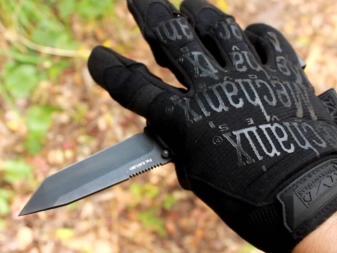How to choose leather work gloves?

Leather work gloves belong to the category of personal protective equipment characterized by an increased level of comfort. They protect hands from negative external influences, withstand intense mechanical abrasion and other loads, are presented in a wide assortment and size range. What you need to know when choosing combined one-piece models of leather gloves of the highest quality for work is worth talking in more detail.


Peculiarities
Leather work gloves are included in the list of personal protective equipment designed for work in particularly difficult and extreme conditions. The natural material has a breathable structure, is durable and resistant to stretching. Gloves made of artificial materials - eco-leather or PVC - are often called leather gloves, but they do not have a sufficiently high reliability. Such inserts are permissible only out of contact with working surfaces.
For the manufacture of quality gloves, cattle, pork, sheep and goat skins are used. The standard material thickness is 0.8 to 2 mm. Leather gloves have precise dimensional characteristics and are resistant to stretching. Their protective properties are determined by the purpose of the product. Simple eco-leather gloves are suitable for drivers of special equipment.
For logging, loading and unloading operations, construction and installation of facilities, models made of natural material with a high leg are used.


Views
All leather work gloves by type of material are divided into ordinary and split leather. The first ones are made from the face layer obtained by grinding - dividing the general layer of the skin. All other layers - usually from 2 to 5, are called split, go to the manufacture of coarse protective gloves for electric welding and other potentially dangerous types of work. It is worth considering that such skin is less elastic, rather loose and rough in structure.
For work in the cold, special insulated gloves with an inner layer of fur are produced. Demi-season products are most often lined with fleece.



Under coarse split-leather gloves and mittens, lower cotton or knitted gloves are worn.
Combined leather gloves are made from a combination of leather and other materials. Inserts can be suede, fabric, kevlar. Such combinations are focused mainly on complex and hazardous types of work.
Combined gloves can also wick away moisture and sweat - in this case, the inserts will be cotton, most often on the back of the hand.



Selection criteria
When choosing leather work gloves, it is important to consider a number of factors that determine their functionality and durability. Sometimes even the highest quality models are simply inconvenient to operate. That is why you need to pay attention to the following points.
- Appointment. Models for electric welding differ markedly from those used for loading and unloading. When working with fire, high-temperature equipment, split options are used. It is important that the degree of protection corresponds to the intensity of the load.
- Number of fingers. It usually differs only in the Krags. There can be 3,2 or 5 of them, depending on the seasonality of use and other features of the product.
- The presence of cuffs. For ordinary gloves, they are short, for specialized ones - for metallurgy, welding, they are high, reaching the forearm.
- Operating conditions. For standard temperature conditions, ordinary thin-lined gloves will suffice.Warmed fur is purchased for the winter period.
- Protection class. It is identified by the EN 388 marker. The higher the number indicated, the better the gloves will be able to protect the hands from external hazards. Models with good performance are not afraid of cuts, punctures, and tears. If chemical resistance is required, the product must be labeled EN 374 and letters indicating the name of the substance from which it can protect.
- The size. Since leather products do not have the ability to stretch, you need to carefully monitor the compliance of their parameters with the length and girth of the hand. They are indicated in millimeters on the packaging or stamp of the product.
- Reflective inserts. They are necessary if work is to be carried out at night.



All these points will help to understand the problem of choosing working leather gloves, to find a suitable model for use in production.

An overview of Elementa work gloves in the next video.













The comment was sent successfully.